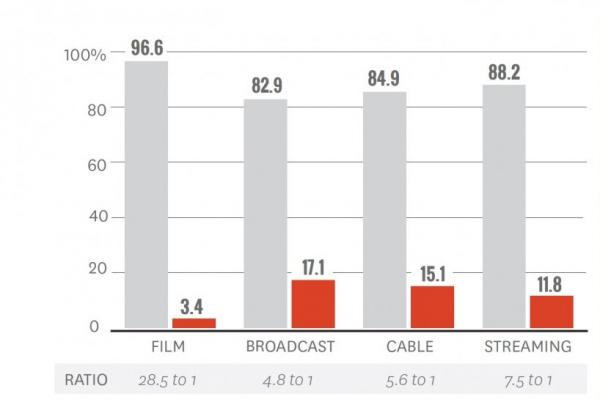Just before Hollywood’s most glamorous — and this year, controversial — night of the year, a new study shows just why the Oscars are so monochrome.
This is the first-ever exhaustive analysis of film, television, and digital streaming services for issues of diversity and inclusion.
Conducted by Stacy L. Smith of the Media, Diversity & Social Change [MDSC] Initiative at the USC Annenberg School for Communication and Journalism, the study reveals how exclusive of women, people of color, and the LGBT community those platforms are.
[T]he analysis found that only 28.3% of all speaking characters across 414 films, television and digital episodes in 2014-15 were from underrepresented racial/ethnic groups. This is 9.6% below the U.S. population norm of 37.9%. One-third (33.5%) of speaking characters were female. Behind the camera, a mere 15.2% of all directors and 28.9% of writers across film and every episode of television and digital series were female. Less than one-quarter (22.6%) of series creators were women across broadcast, cable and streaming content.
“This is no mere diversity problem. This is an inclusion crisis,” said Smith, Founding Director of the MDSC Initiative. “Over half of the content we examined features no Asian or Asian-American characters, and over 20% featured no African-American characters. It is clear that the ecosystem of entertainment is exclusionary.”
The report examined 109 films released by major studios and their art-house divisions in 2014. Additionally, 305 television and digital series across 31 networks and streaming services were analyzed. Smith and her team evaluated over 11,000 speaking characters for gender, racial and ethnic representation, and LGBT status. Additionally, in excess of 10,000 directors, writers, and show creators, along with more than 1,500 executives at the different media companies studied were evaluated based on gender.
Got something to say about what you're reading? We value your feedback!
